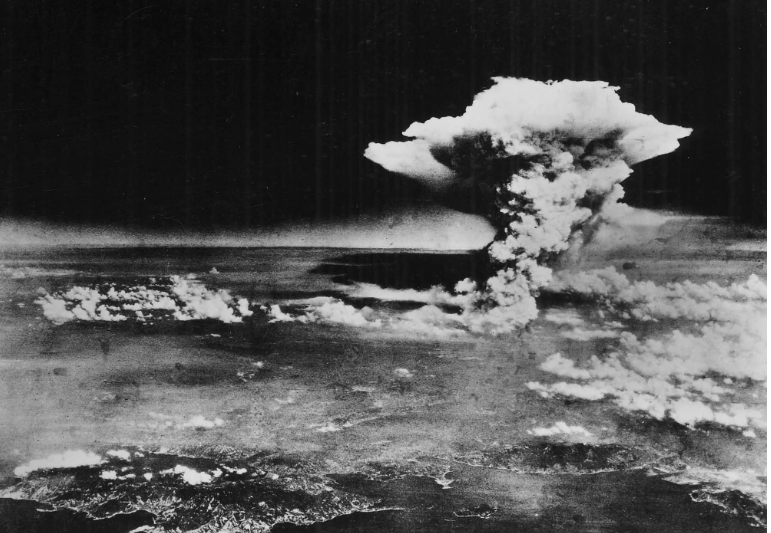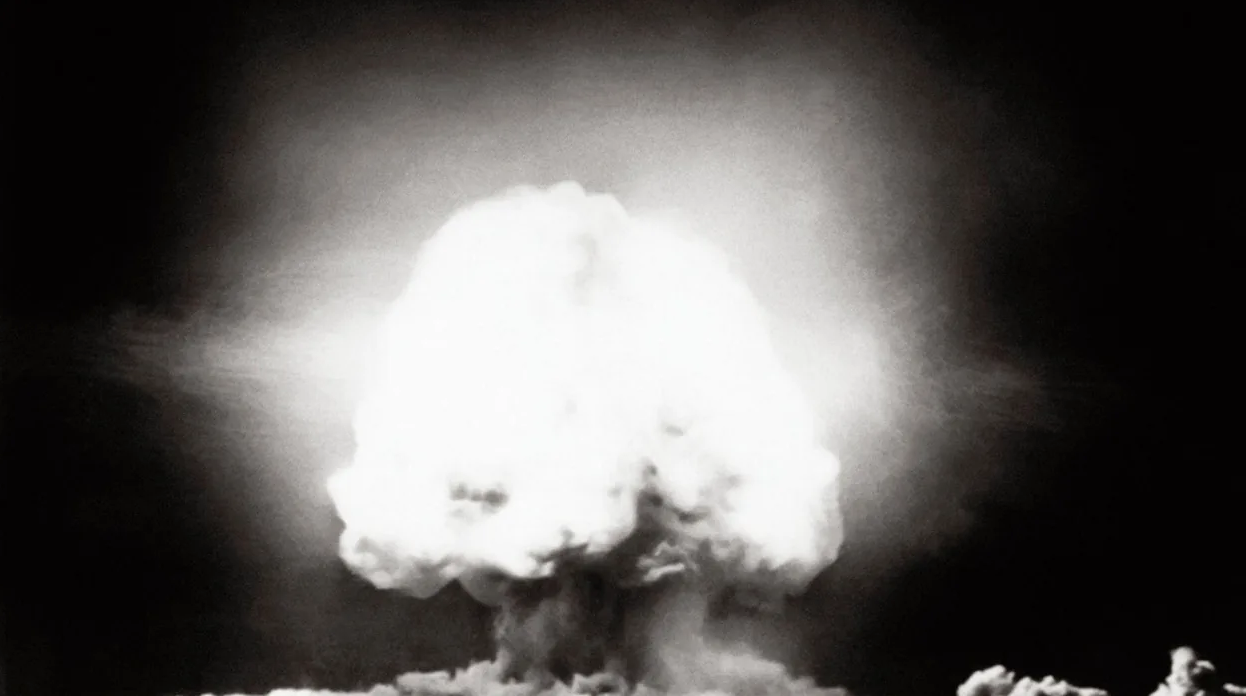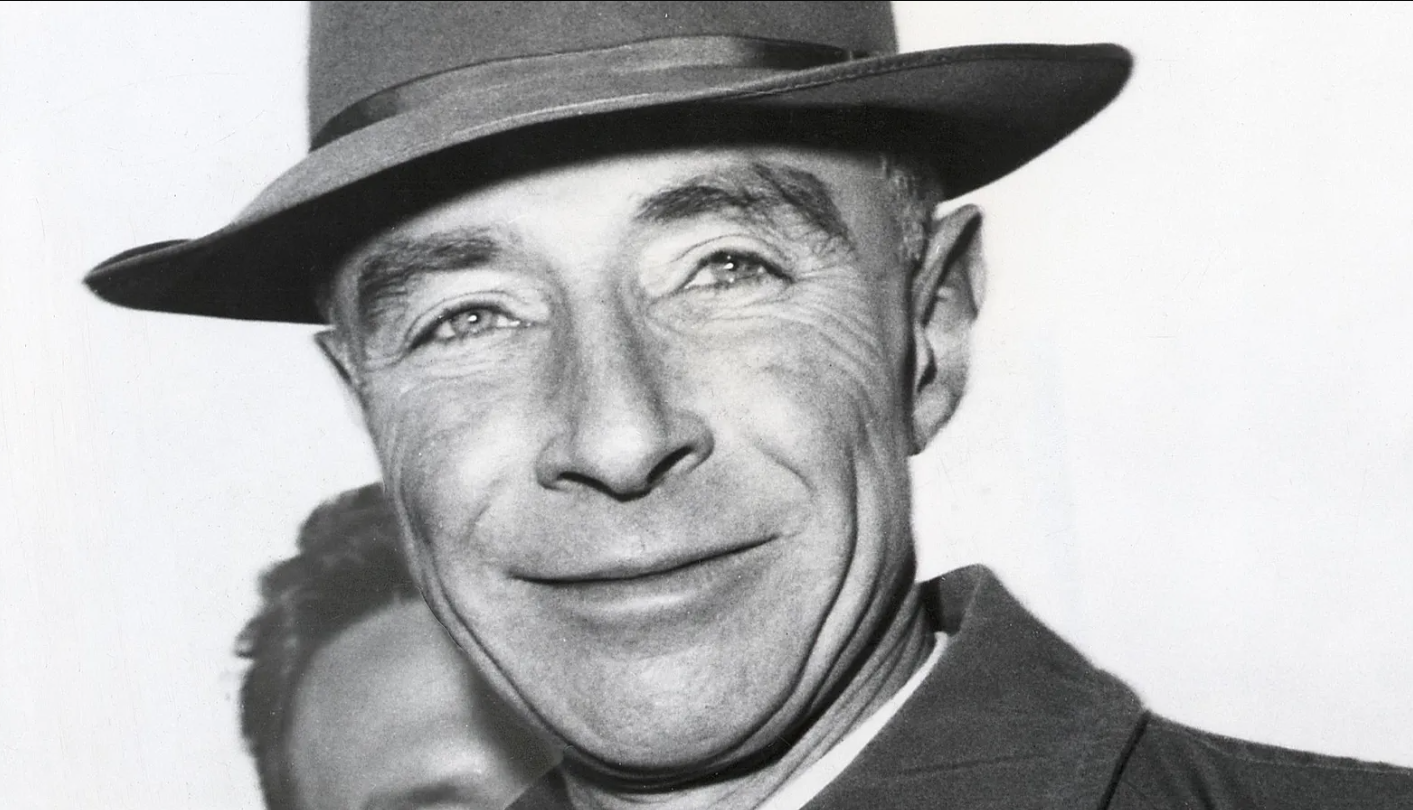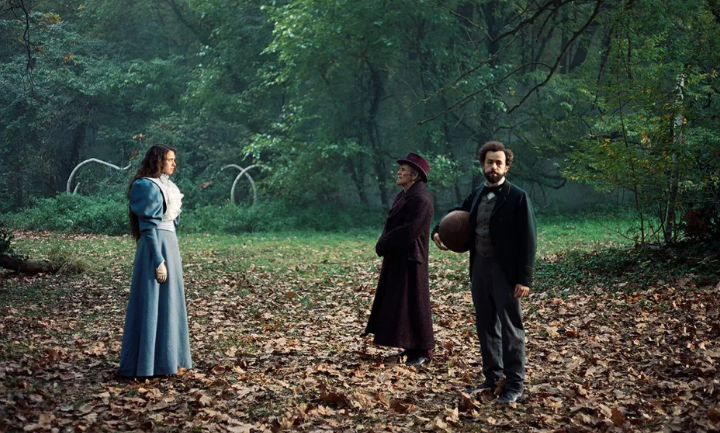Robert Oppenheimer was a complex and enigmatic figure who played a pivotal role in shaping the course of history. Born on April 22, 1904, in New York City, he grew up in a family of privilege and intellectual pursuits. Oppenheimer’s father was a successful textile importer, and his mother was a talented artist.
The date displayed on the calendars was July 16, 1945, early in the day. Robert Oppenheimer sat in a control bunker, awaiting the momentous event that would reshape the world. Approximately 10 kilometers away, the pale sands of New Mexico’s Jornada del Muerto desert would soon witness Trinity, the first-ever test of an atomic bomb in human history.
Oppenheimer was consumed by nerves. Previously a thin man, his three-year involvement in Project Y, the scientific branch of the Manhattan Engineer District responsible for the atomic bomb’s design and construction, had whittled him down to a mere 52 kilograms. At 178 centimeters tall, he appeared skeletal. He slept only four hours each night, frequently disrupted by anxiety and coughing from excessive smoking.
The events of July 16, 1945, were deemed crucial in the biography American Prometheus, published in 2005 by historians Kai Bird and Martin Sherwin. This book also served as the foundation for the Oppenheimer film, set to release in Turkey on July 21.
According to Bird and Sherwin, a US Army general summarized Oppenheimer’s state of mind during the countdown with these words: “In the final seconds, Dr. Oppenheimer’s tension increased. He could hardly breathe…”
The explosion’s light outshone the Sun itself. Unleashing an energy equivalent to 21 kilotons of dynamite, it became the most significant explosion witnessed to date. The shockwave reverberated up to 160 kilometers away. As the explosion’s sound permeated the air and the mushroom cloud ascended, Oppenheimer’s expression shifted to one of “immense relief.” His friend and colleague Isidor Rabi would describe Oppenheimer’s demeanor moments later:
“I’ll always remember the way he walked, the way he exited the car—it was like in the movie High Noon. He had that kind of swagger. He had done it.”
During interviews in the 1960s, Oppenheimer recalled that, in the seconds following the explosion, a line from the sacred Hindu text Bhagavad Gita came to his mind: “Now I am become Death, the destroyer of worlds.”
He served as the heart and brain of the Manhattan Project.
According to his acquaintances, Oppenheimer seemed to sink into a deepening depression in the subsequent days. “Robert became very inactive and absent-minded during those two weeks because he knew what was going to happen,” a friend recollected. One morning, he even lamented the impending fate of the Japanese and remarked dismissively, “Those poor human beings, those poor human beings.” However, this depressive state was short-lived, and within a few days, Oppenheimer returned to being his usual tense, focused, and demanding self.
During a meeting with military counterparts, for instance, he seemed to forget about the “poor human beings” entirely. According to Bird and Sherwin, he fixated on the importance of dropping the bomb under favorable conditions. “They shouldn’t drop it in rain or fog, of course. And don’t let them detonate it too high. The altitude we have determined through our calculations is optimal. They shouldn’t go too high; otherwise, the target won’t sustain sufficient damage.”
One month after Trinity, when he announced to a gathering of colleagues that the atomic bomb dropped on Hiroshima had been successful, he “clasped his hands together and raised them above his head like a victorious fighter.” The applause he received nearly brought down the ceiling.
Oppenheimer was the driving force and intellect behind the Manhattan Project. He exerted the most effort in developing the atomic bomb. Jeremy Bernstein, who collaborated with Oppenheimer after the war, believed that no one else could have invented the bomb. In his 2004 biography, A Portrait of an Enigma, Bernstein wrote, “I am convinced that, for better or worse, without Oppenheimer as the director of Los Alamos, the Second World War would have concluded without the use of nuclear weapons.”
The range and speed with which Oppenheimer experienced the repercussions of his work were astounding. However, it is exceedingly rare to find such a combination of tense vulnerability, ambition, a sense of grandiosity, and mortal grief in one individual, particularly someone who played such a pivotal role in the project that evoked these reactions.
Bird and Sherwin also characterized Oppenheimer as an “enigma” in their book, further adding, “A theoretical physicist who possessed the charismatic qualities of a great leader, an aesthete who fostered ambiguity.” Oppenheimer was a scientist, but he was also, as described by a friend, “a first-class manipulator of the imagination.”
He was the unspoiled son of a rich family
According to Bird and Sherwin, Oppenheimer’s character contradictions, which neither his friends nor his biographers could explain, could be observed from his youth.
Born in 1904 in New York City, Oppenheimer was the son of a first-generation German Jewish family that had prospered in the textile trade. They lived in a large apartment on the Upper West Side, one of the city’s wealthiest neighborhoods, with exquisite works of European art adorning the walls. They had three servants and a chauffeur.
According to his childhood friends, Oppenheimer, despite growing up in a wealthy family, was not spoiled, but generous. His schoolmate Jane Didisheim remembered him as “incredibly easily flushed, very fragile, very rosy-cheeked, very shy” but also “very intelligent”. Didisheim said of Oppenheimer, “In a very short time, everyone recognized that he was different and superior to everyone else.”
By the age of 9, Oppenheimer was reading philosophical texts in Greek and Latin. His greatest passion was mineralogy. He would walk around Central Park and write letters to the New York Mineralogical Club about his findings. His letters were so authoritative that the club officials thought they were dealing with an adult and invited Oppenheimer to make a presentation.
According to Bird and Sherwin, his intellectual temperament was a contributing factor to young Oppenheimer’s isolation. “Most of the time he was preoccupied with whatever it was he was doing or thinking about,” a friend told the authors.
She didn’t care whether she conformed to gender expectations or not. He had no interest in sports or, as his cousin put it, “the frivolities of that age group.” “He was often teased and humiliated for not being like other kids.”
But his parents were sure of their child’s genius. Oppenheimer would later say: “I repaid my parents’ confidence in me by developing an unpleasant ego, which I am sure both children and adults who had the misfortune to come into contact with me found insulting.”
He said to another friend: “It’s no fun to turn the pages of a book and say, ‘Yeah, yeah, sure, I know that’.”

University life was full of depression
Leaving his family to study chemistry at Harvard University, Oppenheimer’s psychological weakness was revealed in those days: his fragile arrogance and unconcealed sensitivity seemed to be taking their toll. In a 1923 letter, published in 1980 as part of a collection edited by Alice Kimbal Smith and Charles Weiner, Oppenheimer wrote:
“I am working on and writing many theses, notes, poems, stories and odds and ends… I mix three different laboratories… I serve tea and talk to a few lost souls like I’m in the know, I take weekends off to distill low-level energy into laughter and exhaustion, I read Greek, make blunders, look for letters on my desk, and wish I were dead. Voila.”
Later letters published by Smith and Weiner show that Oppenheimer’s problems continued during his graduate studies at Cambridge. His teacher insisted on hands-on laboratory work, one of Oppenheimer’s weaknesses. “I am going through a very bad time, laboratory work is terribly boring and I am so bad at it that it is impossible to feel that I am learning anything,” Oppenheimer wrote in 1925.
The tension brought Oppenheimer to the brink of disaster a few months later when he deliberately left an apple poisoned with chemicals from the lab on his teacher’s desk. Friends would later say the motivation behind the act was jealousy and feelings of inadequacy. His teacher didn’t eat the apple, but Oppenheimer’s place at Cambridge was in jeopardy. The school board decided that Oppenheimer could continue his studies, but only if he saw a psychiatrist.
The psychiatrist diagnosed psychosis but dismissed Oppenheimer, stating that treatment would not help. Speaking about those days later, Oppenheimer would say that he seriously considered suicide, especially during the Christmas holidays.
During a trip to Paris the following year, his close friend Francis Fergusson told Oppenheimer that he had proposed to his girlfriend. Oppenheimer’s reaction to this news was to try to strangle Fergusson. Fergusson recalled those moments, “He came up behind me with a luggage strap, wrapped it around my throat… I managed to throw him off me, he fell to the ground and started crying.”

Proust cured Oppenheimer
Let down by psychiatry, it was literature that saved Oppenheimer. According to Bird and Sherwin, he read Marcel Proust’s À la recherche du temps perdu (In Search of Lost Time) during a hiking vacation in Corsica and saw reflections of his own state of mind in the book. In this way, Oppenheimer was freed from his anxieties and opened the door to a more compassionate being. He memorized a passage in the book about “indifference to the suffering one causes” and “the terrible and permanent form of cruelty”. On this vacation, he seemed to predict the future with these words to a friend: “The kind of man I admire most is the one who is exceptionally good at many things and yet manages to maintain a countenance stained with tears.”
Oppenheimer returned to England in much better spirits; he was, as he later recalled, “kinder and more tolerant”. In early 1926 he met the director of the Institute for Theoretical Physics at the University of Göttingen. The director soon recognized Oppenheimer’s abilities as a theorist and invited him to join the institute. According to Smith and Weiner, Oppenheimer would later describe 1926 as the year he “entered physics”.
The following year he received his PhD and a postdoctoral fellowship. At the same time, he became part of a community advancing theoretical physics, meeting scientists who would become lifelong friends. Many of these scientists would later work with Oppenheimer at Los Alamos.
Back in the US, Oppenheimer spent a few months at Harvard before moving to California to pursue a career in physics. The tone of his letters written during this period suggests a more robust and generous mood. In letters to his younger brother, he wrote about love and his growing interest in art.
He worked with experimentalists at the University of California at Berkeley, interpreting their results on cosmic rays and nuclear fission. He would later say that he was “the only person who understood what it all meant”.
The department he founded in later years was rooted in his desire to communicate the theory he loved. He did not initially present himself as a “difficult” teacher, but through this role he acquired the charisma and social standing that carried him through the Project Y era. A colleague quoted in Smith and Weiner’s book noted that Oppenheimer’s students tried to imitate him as best they could, adding: “They copied his gestures, his facial expressions, his accents. He really influenced their lives.”
As his academic career took off in the 1930s, Oppenheimer continued to devote time to the social sciences. It was during this period that he was introduced to Hindu texts, learning Sanskrit so he could read the Bhagavad Gita, which had not been translated into English. In addition to an intellectual interest, he wanted to continue the bibliotherapy he had begun with Proust in the 1920s. The Bhagavad Gita, about the war between two branches of an aristocratic family, provided Oppenheimer with a philosophical foundation that he could apply directly to the moral ambiguity he experienced during Project Y. The book emphasized the ideas of duty, destiny and detachment from consequence, stressing that fear of consequences could not be used to justify inaction. In a letter to his brother in 1932, Oppenheimer referenced the Gita and noted that war was one of the situations that would provide an opportunity to put such a philosophy into practice.
In the mid-1930s, Oppenheimer met Jean Tatlock, a psychiatrist and physicist with whom he fell in love. According to Bird and Sherwin, Tatlock’s character was as complex as Oppenheimer’s. Driven by a social conscience, Tatlock was described by a childhood friend as having “a touch of wonder.” Oppenheimer proposed to Tatlock several times but was rejected. Through Tatlock, Oppenheimer was introduced to radical politics and the poetry of John Donne. Oppenheimer continued to see Tatlock from time to time after his marriage to biologist Katherine Harrison in 1940. Harrison, known as “Kitty” in her close circle, joined Project Y. Here she worked as a phlebotomy (bloodletting) specialist and researched the dangers of radiation.

General Leslie Groves chose him
By 1939, the nuclear threat was more of a concern for physicists than politicians. It was a letter written by Albert Einstein that put the issue on the agenda of the US administration. Reactions came slowly, but the scientific world was not about to let it go. Eventually, the president was persuaded to take action. Oppenheimer, one of the country’s leading physicists, was one of the few scientists assigned to take a closer look at the potential of nuclear weapons.
By September 1942, thanks in part to Oppenheimer’s team, it was clear that a bomb was possible, and concrete plans began to be drawn up to develop the weapon. According to Bird and Sherwin, upon hearing that he might be put in charge of this endeavor, Oppenheimer began his own preparations. He told a friend, “I am cutting all ties with the Communists. If I don’t do this, the government will find it difficult to use me. I don’t want anything to interfere with my usefulness to the nation.”
Einstein would later make the following statements: “Oppenheimer’s problem is that he loves something that doesn’t love him: the US government.” However, his patriotism and desire to please played a major role in his hiring.
The task of finding the scientific director of the bomb project went to General Leslie Groves, the military leader of the Manhattan Engineer District. In his 2002 biography, Racing for the Bomb, Groves recounted that he suggested Oppenheimer’s name but faced opposition. According to Groves, Oppenheimer’s “ultra-liberal background” was a cause for concern. But in addition to his talent and knowledge of science, Groves also spoke of Oppenheimer’s “haughty ambition”. The Manhattan Project’s security chief also pointed out: “I was convinced that he was not only loyal, but that he would let nothing stand in his way of accomplishing his mission and taking his place in the history of science.”
In the book The Making of the Atomic Bomb (1988), Oppenheimer’s friend Isidor Rabi said that Oppenheimer’s selection was unlikely, but later had to admit that “General Groves was an example of his genius”.
At Los Alamos, Oppenheimer applied his contrarian, interdisciplinary judgment to every field. In his 1979 autobiography, What Little I Remember, Austrian-born physicist Otto Frisch wrote that Oppenheimer hired scientists as well as a painter, a philosopher, and several other unlikely characters because he believed that a civilized society would be incomplete without them.
The burden of responsibility for the war has become too heavy
After the war, Oppenheimer’s attitude began to change. He characterized nuclear weapons as instruments of “aggression, surprise, terror” and called the arms industry “the work of the devil”. At a meeting in October 1945, he told President Truman, “I feel that I have blood on my hands.” “I told him that the blood was on my hands, that I was the one who should be worried,” the President would later say.
At the time of the development of the atomic bomb, Oppenheimer used the following argument to assuage both his own hesitations and those of his colleagues: As scientists, they were not responsible for deciding how to use the weapon, they were just doing their job. If there was bloodshed, that was the responsibility of the politicians. But after the bomb was dropped, Oppenheimer’s confidence began to waver. As Bird and Sherwin report, Oppenheimer, who served on the Atomic Energy Commission after the war, opposed the development of more powerful nuclear weapons, such as the hydrogen bomb he had laid the foundations for.
For this stance, Oppenheimer was investigated in 1954 and his security clearance was revoked. This meant he could no longer do policy work.
The academic community did its best to support Oppenheimer.
In 1963, the US government awarded Oppenheimer the Enrico Fermi Prize as a sign of political rehabilitation. But the 1954 decision to revoke his security clearance remained in effect until 2022. In other words, Oppenheimer’s loyalty was only confirmed 55 years after his death.
Late in his life, Oppenheimer vacillated between pride in the technical achievement that created the bomb and guilt over its consequences. In his resignation letter, he said several times that the bomb was inevitable.
Oppenheimer spent the next 20 years as director of the Institute for Advanced Study at Princeton University, where he worked with Einstein and many other prominent physicists.
A heavy smoker since adolescence, Oppenheimer battled tuberculosis at various stages of his life. He was 62 when he died of throat cancer in 1967. Two years before he died, he made the difference between science and poetry with this very simple statement: “Unlike poetry, science is about learning not to repeat the same mistake.”



